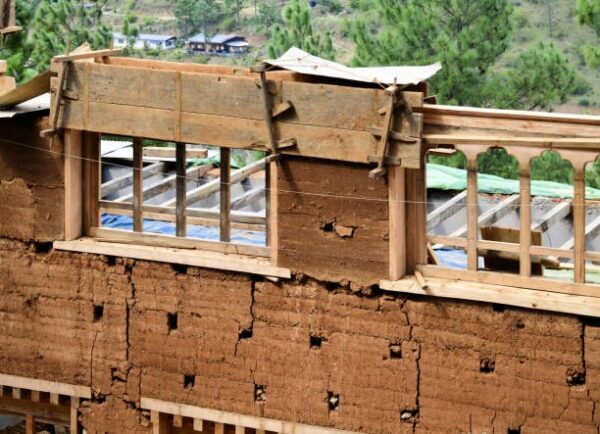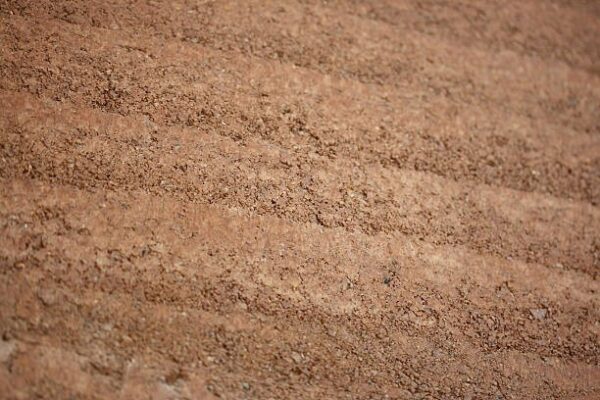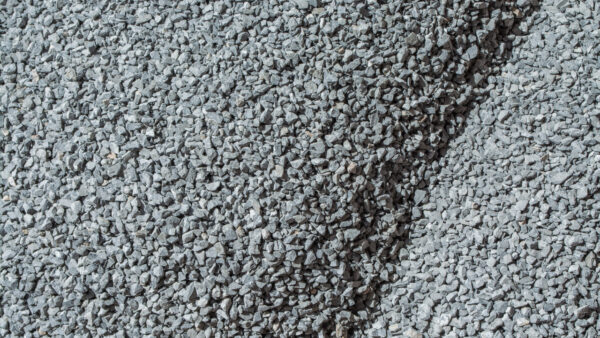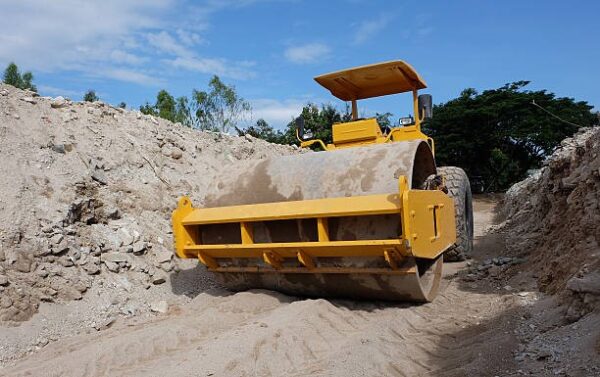Have you ever come across ancient buildings and wonder what makes them stand to date? Well, no rush, we will walk you through a traditional building technique that was discovered centuries ago and is still found effective in contemporary construction works.
You might have guessed it by now because rammed earth is what we are referring to, Let us dig deeper into this building material and make notes of what’s essential to know about it.
Rammed earth, as the name indicates, is a building technique that applies external compactive effort to a soil composite to improve its mechanical properties. This process of applying an external effort on the natural earthen material is termed as ramming.
Rammed earth is a composite and compressed material comprising earth (natural soil), sand, gravels, and some stabilizer (bituminous or cementitious). These materials are laid in layers and rammed, with water added to enhance cohesion between them and to optimize the compaction process.
The ramming operation may be carried out using manual tools or some mechanical equipment. As a result of this process, the earth-based composite material gains strength and stiffness and can be used as a building material for a variety of construction works.
Table of Contents
Sneak Peek into the History of Rammed Earth
Centuries ago, builders from the around the world practiced this traditional building method by utilizing the cohesive properties of soils that have a good clay content. They mixed the soil with some aggregates and small quantities of water, and through an external compactive effort, they found that the properties of the composite earthen material were greatly enhanced.
The use of rammed earth as a building material proved to be a sustainable and cost-effective construction approach which relied on natural materials often found in the vicinity of the construction area.
Builders were convinced that rammed earth causes no deleterious effects on the environment and therefore, this technique was heavy relied upon in the past. Even in modern day construction, you will come across structures made from rammed earth. This is because of some of the advantages of rammed earth that makes its use a preference in certain cases.
Fundamental Ingredients of Rammed Earth
The fundamental ingredients of rammed earth are soil (containing appreciable clay content), aggregates (sand and coarse aggregates) and a stabilizer (which is additional and may not be added depending upon need).
The proportions of the above-mentioned ingredients in rammed earth will depend on individual material characteristics, site conditions and the desired properties of rammed earth. All the constituents of rammed earth are naturally-occurring materials and this can give you substantial cost savings.
-
Soil
Soil (natural earth) is the basic ingredient required for producing rammed earth. The type of soil selected should be such that it contains an appreciable percentage of clay, typically in excess of 25%. The reason clay is given due weightage is because of its cohesive properties. However, it must be ensured that the soil is free from any organic matter or other contaminants.
-
Coarse and Fine Aggregates
Coarse aggregates (gravels or crushed stones) as well as fine aggregates (sand) are added in measured proportions to the soil. They add strength and stability and prevent the mixture from shrinkage upon drying.
The size of coarse and fine aggregates will significantly affect the texture of the rammed earth.
-
Stabilizer
A soil stabilizer is any material (natural or man-made) that is added to a weak soil to improve its strength and stiffness characteristics. In rammed earth, stabilizers can be added in the form of cement, lime or any bituminous material.
The type of stabilizer to be used depends upon the properties of the soil and the degree of stabilization you are targeting. It also varies from project to project and the amount of stabilizer required is also to be assessed.
-
Water
All types of soil compaction are aided by the addition of water. This is because water acts as a lubricating agent in bringing the particles close to one another in a dense packing. In the preparation of rammed earth, small quantities of water are added to make the compaction process easier and to help the individual ingredients get interlocked with each other.
-
Additives
In certain situations, if you want to modify the properties of rammed earth, some additives may be added. These can include color pigments that impart a certain color to the mix, fibers to provide additional strength and durability, etc.
Steps to Produce Rammed Earth
The first step to the production of rammed earth is collecting the ingredients (appropriate soil, aggregates, and a suitable stabilizer). Usually lime or cement is added in small quantities as a stabilizing agent.
The selected soil is tested for its composition and clay content and if the test results indicate a fair clay content, only then the soil can be used for the production of rammed earth.
Following this, the ingredients are mixed together in correct proportions to form a homogenous mixture. Water is then added to attain the required moisture content that will facilitate the process of ramming.
Formwork is then laid and the earthen mixture is placed in layers into the formwork. Upon placement of each layer, ramming or compaction is done using any mechanical equipment until the desired level of compaction and member thickness if achieved.
After placing and compacting the last layer, the top surface can be leveled and finished using a trowel.
If cement is added in the earthen composite, the process of curing is essential to the strength gain phenomenon. Therefore, proper curing is also required for the rammed earth to gain the target strength.
Key Features of Rammed Earth
The performance of rammed earth is good in terms of providing strength and durability in addition to economy. Following are some of the striking features of rammed earth that make its use promising.
- The compressive strength of rammed earth depends on a lot of factors. These include the soil type and gradation, the aggregate size, the amount and type of stabilizer used, the ramming method employed on site and the moisture content added to aid the compaction process. All these factors combined will dictate the characteristics of the final composite material.
- As discussed previously, the ingredients of rammed earth are all natural and locally available. Therefore, using it for construction works is a sustainable and environment-friendly practice.
- It is an energy-efficient material and reduces any harsh impact on the environment. It also helps regulate the indoor temperatures and maintains a temperature poise. This will reduce the need for heating and cooling system inside a building.
- If you proper maintain your rammed earth structure, it will prove to be a very durable material and can last even for centuries.
- Rammed earth is naturally not susceptible to frost or decay and can efficiently resist fire and any pest attack.
- Rammed earth can also be tailored for any aesthetic look you want. This offers flexibility in design and construction. The finished surface can also be painted for any decorative look.
- It is a low-cost construction material and using it, you will end up with cost savings in material and labor costs. However, in certain cases, when mechanical equipment is used for ramming, skilled labor is required for the compaction work and this may augment the overall cost but even in that case, the long-term energy savings and structural durability will be the add-ons.
- You can customize rammed earth for your construction project. It can not only be molded into any shape specified by the builder but can also be tailored aesthetically, by imparting either an aesthetic color or texture.
Ramming Equipment
The process of ramming the earthen materials to make a compacted composite out of them requires some external effort. Therefore, in order to compact the ingredients, either hand tools or mechanical equipment may be used.
The choice of which method to be adopted depends upon your project specifications, the degree of compaction you are targeting and the individual properties of earthen materials.
These ramming methods are detailed as follows;
-
Manual (Hand) Tools for Ramming
If rammed earth is to be produced in small quantities for a construction work, you can manually perform the compaction process. This involved tamping the earthen materials using hand tools such as tampers or rammers.
A compressing force is applied in layers to compact the aggregated earthen materials and reduce the air between them. However, this method of ramming does not provide efficient compaction if a large quantity of rammed earth is to be produced. In addition, this manual process is more labor-intensive and time-consuming in comparison to any mechanical approach.
-
Mechanical Ramming Equipment
Mechanical equipment can be used for the ramming process and reduce the manual effort of labor. It is not just faster and less labor-intensive but also provides a consistent level of compaction over the entire surface.
Mechanical ramming equipment comprises a large steel plate that is automated to apply a compressive force on the earthen mixture to compact it. To achieve the required level of compaction, you can drive the plate into the mixture iteratively.
This method of ramming is generally preferred to produce a consistent quality of rammed earth and is typically employed in construction works where an appreciable material quantity is to be produced.
-
Hydraulic Press
For ordinary construction works, hydraulic presses are not preferred for compacting or ramming the earthen materials. These are large machines that utilize hydraulic pressure to stiffen or compact the materials. However, for very large construction projects in the industrial or commercial sector, these may be used to speed up the ramming process and provide an efficient results.
-
Pneumatic Rammers
The use of pneumatic rammers is also confined to small scale projects such as a residential building. These are portable rammers that are light in weight. They use compressed air to drive a steel plate into the earthen mixture.
Applications of Rammed Earth

Rammed earth structure under construction
Rammed earth is stable and durable material having vast applications and is considered versatile with regard to its performance. Following are a few applications of rammed earth that you probably will have seen around you.
- Rammed earth can be used as a foundation building material and for the construction of walls in a residential building. It provides strength, durability, stability and thermal efficiency while giving a pleasing look.
- The use of rammed earth also find its applications in commercial buildings such as offices, and other public buildings.
- For landscaping and other outdoor works, rammed earth can be a good option to consider. It is not just cost-effective but provides a promising performance.
- Traditionally, the use of rammed earth was very vast and large structures were build using it as the main construction material. All those historical buildings can be preserved and maintained using rammed earth.
- Where art and design compliment the structural integrity, rammed earth surfaces as the most eco-friendly and economical option to customize your structures. It can be used to make sculptures and other artistic designs for decorative purposes.
Cons of Using Rammed Earth
Rammed earth also has some drawbacks that must be evaluated and not ignored while you make a choice for the construction materials.
- It is hard to access appropriate soil types and assess each one of them for the required level of clay content. In addition, the soil should also be free from contaminants and organic matter and ensuring it all is a challenge in itself. In addition to the limited availability of the right soil types, the transportation cost can be an added feature if the required soil is located far away from your site.
- In case the ramming operation is carried out manually, the task become labor-intensive and the results might not be very promising. This can incur additional costs to either switch to a mechanical method or employ highly skilled labor.
- The reliance on rammed earth can be time-consuming and might delay the overall duration of your project. In particular, if rammed earth is used as a foundation material or in the walls, it can take several weeks or even months to complete.
- The compaction or ramming process is sensitive to the addition of moisture and varying the quantity of water added might result in different results. Moreover, rammed earth is prone to damage caused by infiltrating water particularly in areas where precipitation levels are high. In such cases, proper waterproofing is required to maintain the structure and prevent it from damaging.
- Rammed earth cannot be used for all types of structural purposes. This is because the heterogeneous mixture of earthen materials does not possess the same properties in all directions. Therefore, it has some structural limitations and is not preferred in seismically active areas or in structures subjected to high-pressure winds.
Precautions when Producing Rammed Earth
A careful preparation of rammed earth is essential to achieve the target characteristics. A number of factors are to taken into account are these guidelines will help you get the most out of your efforts.
- Do not over compact the earthen materials. This is because too much compactive effort or compressive force is likely to break individual particles leading to attrition. In addition, insufficient compaction might lead to differential settlement because of a part of the material being compacted well and the remaining left short of due care.
- Quality control measures should be taken on part of the ingredients to meet the strength and durability requirements.
- If heavy equipment is used for the ramming process, safety precautions must be ensured to avoid any mishap on site.
- It must be ensured that during the ramming process, the mixture is kept moist and adequate moisture levels should be maintained. Moisture is essential for a smooth and speedy compaction process.
- The temperature and humidity levels are also crucial when it comes to compaction. In very hot climate, the moisture added in the earthen mixture should be kept on the wet side of optimum to keep some margin for evaporating water.
Frequently Asked Questions (FAQs)
Is rammed earth stronger than concrete?
Rammed earth is a durable material; however, its strength depends upon a number of factors one of which is the type of stabilizing agent used. If you go for cement-based rammed earth, it will provide appreciable and comparable compressive strength after appropriate curing period.
However, the strength characteristics of rammed earth can only be compared to ordinary concrete used in normal construction works.
How long does rammed earth construction last?
The structural integrity offered by rammed earth is promising for a longer duration of time. However, this also depends upon factors such as the site location, the applied loading, the purpose the structure has to serve, etc.
In general, rammed earth construction can last for centuries is properly designed and constructed. This includes ensuring quality control at each stage and maintaining the structure over time. If you do so, you can extend the lifespan of your structure.
If signs of minor cracking become visible over time, you can immediately repair them by applying protective coatings or replacing the damaged part. In addition, rammed earth is sensitive to moisture damage and should not be exposed to varying levels of moisture.
Can we add reinforcement in rammed earth?
Reinforcement in rammed earth may or may not be added depending upon need. If is generally added to increase its strength and durability. This can be in the form of reinforcing bars or mesh that are embedded in the rammed earth, mostly to augment its tensile strength.
An external coating in the form of plaster or stucco may also be applied to provide protection to the reinforcement.
How do rammed earth structures fail?
The failure mode can vary depending upon how well executed your design is. In general, rammed earth construction usually fails in either of the following modes;
- Deterioration due to water ingress may cause your structure or part of it to fail. This is because, the earthen material composite is susceptible to damage if water penetrates and softens them.
- Differential settlement may take place if the underlying soil is not properly worked upon and is weak and crumbling.
- In case of overload, rammed earth structures can experience cracking and may even collapse. Therefore, proper structural design is the key factor.
- In case of rammed earth walls, you might see insects burrowing into the walls, making it weak and unfit for taking structural loads.















